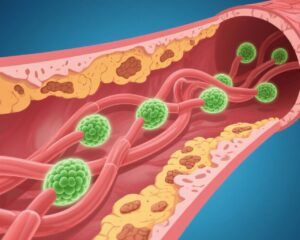Introduction
Obesity is a pressing global health challenge linked to numerous chronic diseases including diabetes, cardiovascular disease, and certain cancers. According to the Centers for Disease Control and Prevention (CDC), more than 42% of adults in the United States are affected by obesity, leading to serious health and economic consequences. A popular saying goes, “Weight loss depends seventy percent on diet and thirty percent on exercise,” highlighting the critical role of eating habits in managing body weight. Recognizing this, scientific research has emphasized the importance of adopting evidence-based dietary approaches tailored to individuals struggling with obesity.
Understanding Obesity and Its Health Implications
Obesity results from an energy imbalance where calorie intake exceeds energy expenditure over time. Besides excess body fat itself, obesity contributes to insulin resistance, increased systemic inflammation, dyslipidemia, hypertension, and impaired metabolic function. Effective, sustainable weight management requires well-structured dietary interventions that support nutrient adequacy while reducing excess caloric intake.
Scientifically Supported Dietary Patterns for Weight Loss
Currently, several dietary models demonstrate clear benefits in reducing weight and improving metabolic health among individuals with obesity. Below, we detail five well-studied and clinically relevant diets:
1. Caloric Restriction Diet (CRD)
This approach focuses on reducing daily energy intake by 500–1000 kilocalories or by approximately 30–50% of total caloric consumption, generally maintaining total intake around 1000–1500 kcal/day. Macronutrient distribution typically includes 50–60% carbohydrates, 15–20% protein, and 20–30% fat. CRD is especially effective for mildly obese individuals or people in the maintenance phase following significant weight loss. By ensuring essential nutrient intake while reducing calories, CRD provides a balanced, sustainable method for gradual weight loss.
Sample 1300 kcal daily menu under CRD (Example)
– Breakfast: Oatmeal with fresh berries and low-fat milk
– Lunch: Grilled chicken breast with mixed greens and olive oil dressing
– Dinner: Steamed vegetables with brown rice and lean fish
2. High-Protein Diet (HPD)
HPD emphasizes protein intake of 20–30% of total calories, equating to approximately 1.2–1.5 grams per kilogram of body weight daily. The “Four Twos” rule helps simplify daily protein targets: two 250ml milk servings, two eggs (or egg whites for individuals with high cholesterol), two servings (~100 grams) of lean meat (divided equally between red and white meat), and two servings of soy products.
Clinical evidence shows HPD effectively reduces fat mass and supports weight maintenance, particularly in simple obesity and cases with lipid abnormalities. However, caution is warranted for patients with chronic kidney disease due to potential acceleration of renal impairment.
Sample daily menu for HPD
– Breakfast: Vegetable omelette (2 eggs + 75g mixed vegetables)
– Lunch: Grilled chicken breast (150g) with 200g vegetables and 15 ml olive oil
– Dinner: Baked fish (150g) with 200g green vegetables (spinach or broccoli) and 50g dry weight beans
3. Low-Carbohydrate Diet (LCD)
This diet restricts daily carbohydrate intake to 100–150 grams, accounting for ~26–45% of total energy. A stricter variant, the ketogenic diet, reduces carbohydrates to less than 50g daily (<5–10% of energy). LCDs help reduce inflammatory markers, lower blood pressure, and decrease cardiovascular risks.
Patients choosing LCD should monitor carbohydrate consumption carefully and incorporate healthy fats and proteins to maintain nutritional balance.
4. Intermittent Energy Restriction (IER)
IER involves cycling between periods of reduced or very low calorie intake and normal eating. Popular forms include alternate-day fasting, 5:2 fasting (two non-consecutive days per week of 500–600 kcal intake), 4:3 fasting, and time-restricted eating (e.g., 16/8 fasting where food is consumed within an 8-hour window, fasting for 16 hours).
IER supports weight loss, improves insulin sensitivity, delays aging processes, enhances gut microbiota health, and may lower cancer risk in experimental settings.
However, IER is not suitable for everyone—pregnant women, individuals with significant weight loss or malnutrition, chronic illnesses, or severe gastrointestinal conditions should avoid it unless supervised.
5. Low Glycemic Index (LGI) Diet
LGI diets endorse foods with glycemic index (GI) below 55, meaning they cause a gradual, smaller increase in blood glucose levels. Examples include whole grains, fresh vegetables, fruits, and dairy products.
Eating low-GI foods contributes to increased satiety and reduced fat accumulation but does not authorize overeating since calories still count. Moreover, the GI of foods can vary with processing and preparation; for example, highly processed foods often have higher GI. Some low-GI foods, like avocados, are calorie-dense and should be consumed judiciously.
Recommended Low-GI Foods
Corn, barley, oatmeal, milk, soy milk, lentils, soybeans, taro, Chinese cabbage, cabbage, celery, spinach, oilseed rape, chives, bitter melon, and cucumber.
Important Considerations for Weight Loss in Obesity
- Balanced nutrition: Whatever dietary pattern is chosen, it is critical to ensure adequacy of all nutrient groups to avoid deficiencies.
- Avoid extreme diets: Overly restrictive or fad diets may lead to malnutrition or other health problems and often fail in the long term.
- Combine with physical activity: Incorporation of regular moderate exercise enhances weight loss efficacy, improves body composition, and supports metabolic health.
- Mental health: Managing psychological well-being during weight loss efforts is essential to sustain motivation and prevent stress-related setbacks.
Patient Scenario: “John’s Journey to Healthy Weight”
John, a 45-year-old accountant with a BMI of 32, faced worsening hypertension and prediabetes. He consulted a dietitian who introduced a calorie-restricted diet combined with intermittent fasting (5:2 method). John focused on consuming high-protein meals on fasting days and moderate carbohydrate intake on normal days. Over six months, John lost 12 kg, experienced improved blood glucose levels, and reported enhanced energy and mood. His case illustrates how personalized diet selection, professional supervision, and behavioral changes synergize to manage obesity effectively.
Conclusion
Obesity management relies heavily on adopting scientifically validated dietary approaches tailored to individual needs and health conditions. Caloric restriction, high-protein diets, low-carbohydrate plans, intermittent fasting, and low glycemic index diets all provide distinct mechanisms and benefits to support weight loss and metabolic improvements. Successful long-term outcomes depend on balanced nutrition, avoidance of extreme practices, integration of physical activity, and sustaining psychological wellness. For anyone considering weight management plans, consulting qualified healthcare professionals is crucial to align interventions with personal health profiles and ensure safe, effective progress.
References
- Hall KD. What is the required energy deficit per unit weight loss? Int J Obes (Lond). 2008;32(3):573-6. doi:10.1038/sj.ijo.0803779
- Bhasin S, et al. Protein Intake and Muscle Function in Obese Adults: A Review. Nutrients. 2017;9(4):E422. doi:10.3390/nu9040422
- Bueno NB, et al. Very-low-carbohydrate ketogenic diet v. low-fat diet for long-term weight loss: a meta-analysis of randomised controlled trials. Br J Nutr. 2013;110(7):1178-87. doi:10.1017/S0007114513000548
- Trepanowski JF, Bloomer RJ. The Impact of Intermittent Fasting on Health Markers in Humans. Nutr J. 2010;9:32. doi:10.1186/1475-2891-9-32
- Jenkins DJ, et al. Low-glycemic index diets in the management of diabetes: a meta-analysis of randomized controlled trials. Diabetes Care. 2008;31(1):131-4. doi:10.2337/dc07-2046
- Centers for Disease Control and Prevention. Adult Obesity Facts. 2022. https://www.cdc.gov/obesity/data/adult.html


